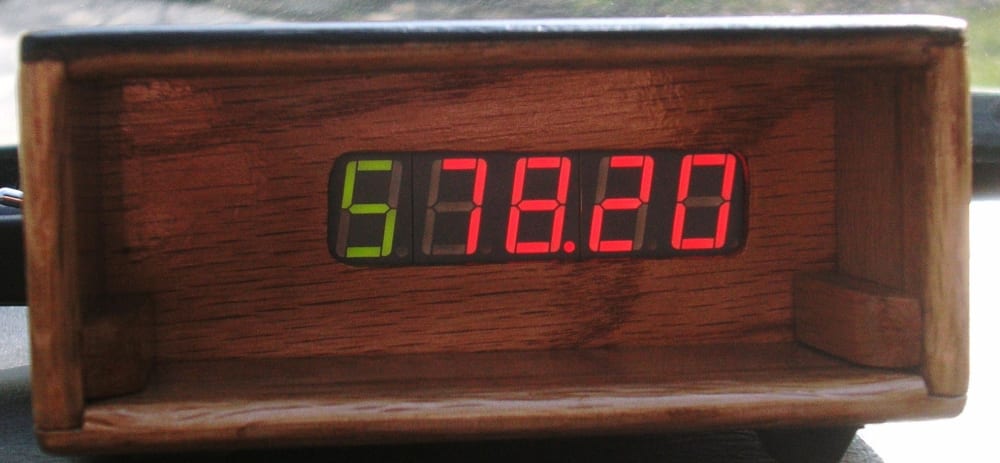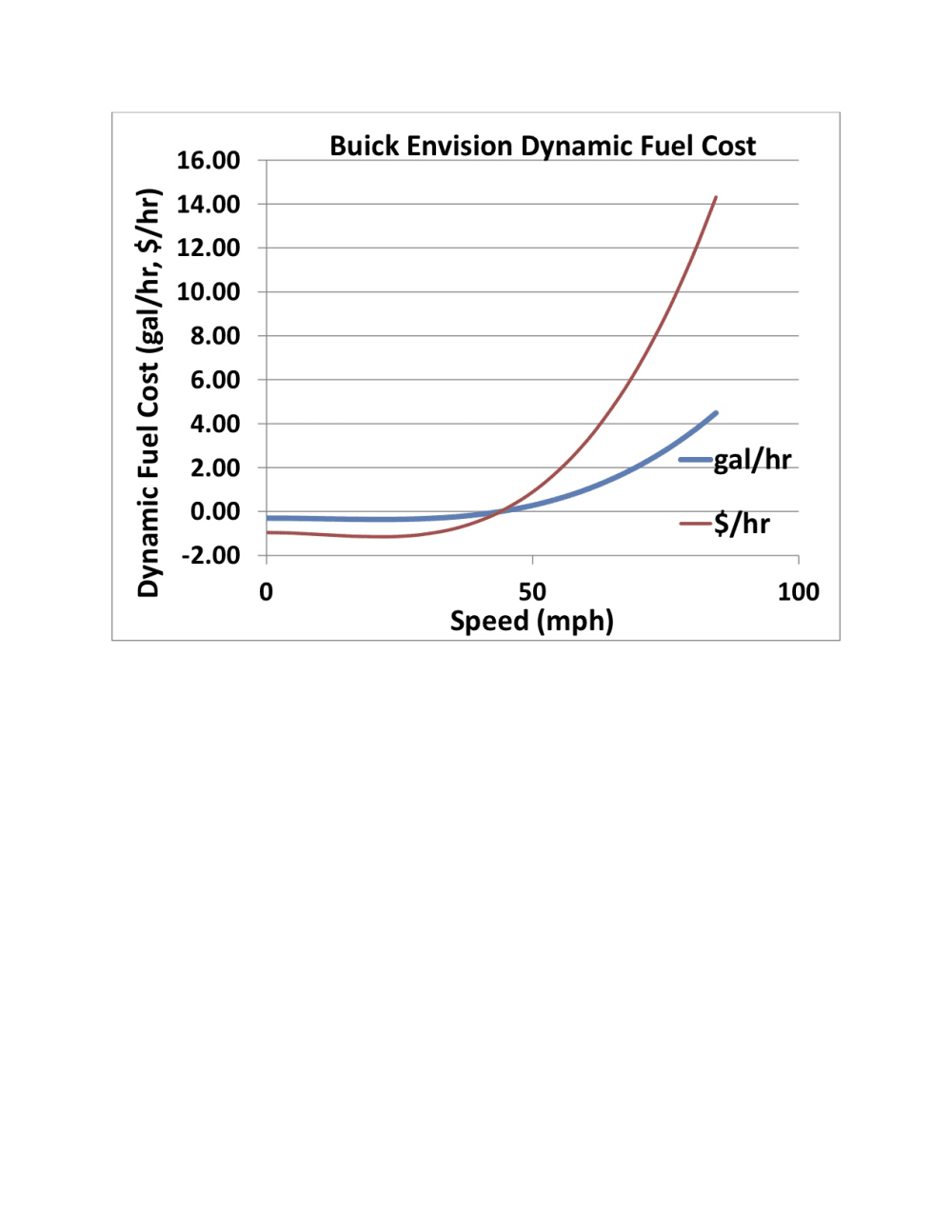So you are back to your commute, and find the price of gas has gone up 50% or more, perhaps impacting your budget and causing you to consider more fuel-efficient driving. That live miles-per-gallon (MPG) on your digital display might help, but how can a number be useful if it ranges between 1 mpg and 99 mpg? Is your driving minimizing emissions?
Consider a journey of 206 miles in a mid-size SUV at 75 mph versus 55 mph, as follows:
At 55 mph and 35 miles per gallon for 206 miles, travel time is 3.75 hours, 5.9 gallons fuel At 75 mph and 28 miles per gallon for 206 miles, travel time is 2.75 hours, 7.4 gallons fuel
The higher speed consumes 1.4 gallons additional fuel, $4.20 at today’s price, but reduces travel time by 1 hour. The higher speed is worthwhile, when compared to today’s Minimum Wages. However, collecting the required data and doing the relevant calculations over the vehicle speed range is not for the faint of heart.
ValueGauge consists of a microcomputer and display unit that connects to the vehicle’s On Board Diagnostic (OBD) data port. Most of the components are available from our sponsors. Instead of a simple data reporter like other products, ValueGauge learns your vehicle’s behavior and develops a mathematical model of fuel consumption, and computes and displays fuel efficiency as Dynamic Fuel Cost, or DFC, using our proprietary algorithms. Dynamic Fuel Cost relates the cost of fuel in relation to time at the wheel, in those common, simple units of dollars per hour. A chart of the steady speed DFC for my Buick Envision is included as Figure 2, with curves for DFC in both gallons per hour and $ per hour as a function of speed. Note that the values are negative at less than 45 mph, meaning faster travel reduces both fuel consumption and travel time. The speed for highest fuel mileage for this vehicle is 45 mph, where DFC is zero. At speeds above 45 mph, travel times decrease but fuel consumption increases, causing DFC to increase in a non-linear manner, rising to $14 per hour at 84 mph. Data on a dozen vehicles show similar results.
The most interesting and eye-opening aspect of this technology is that it shatters the traditional advice for economical driving. ValueGauge has revealed the best way to save fuel that is ignored by all the experts; that is simply, coast more and brake less. Brakes waste kinetic energy (fuel burned to accelerate), converting it to heat. The process: plan ahead and coast a while, simply by lifting off the accelerator, then apply the brakes to come to a stop. An additional benefit is longer brake life; brakes are for sissies, race car drivers, and car magazine writers. Figure 1 shows the ValueGauge display while coasting at 70 mph, the Green “S” indicates “Save” mode at $78.20 per hour.
A final request; drive safely, for yourself and other users of the roads.
Like this entry?
-
About the Entrant
- Name:David B Smith
- Type of entry:individual
- Patent status:patented





